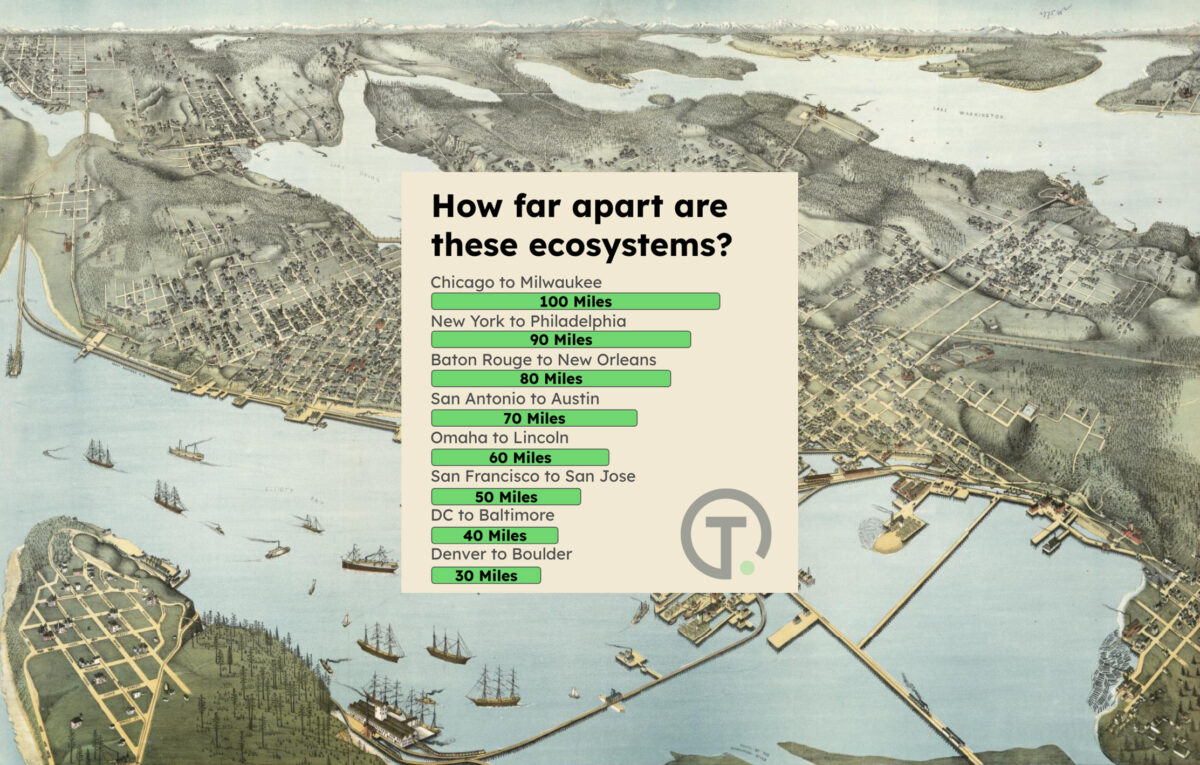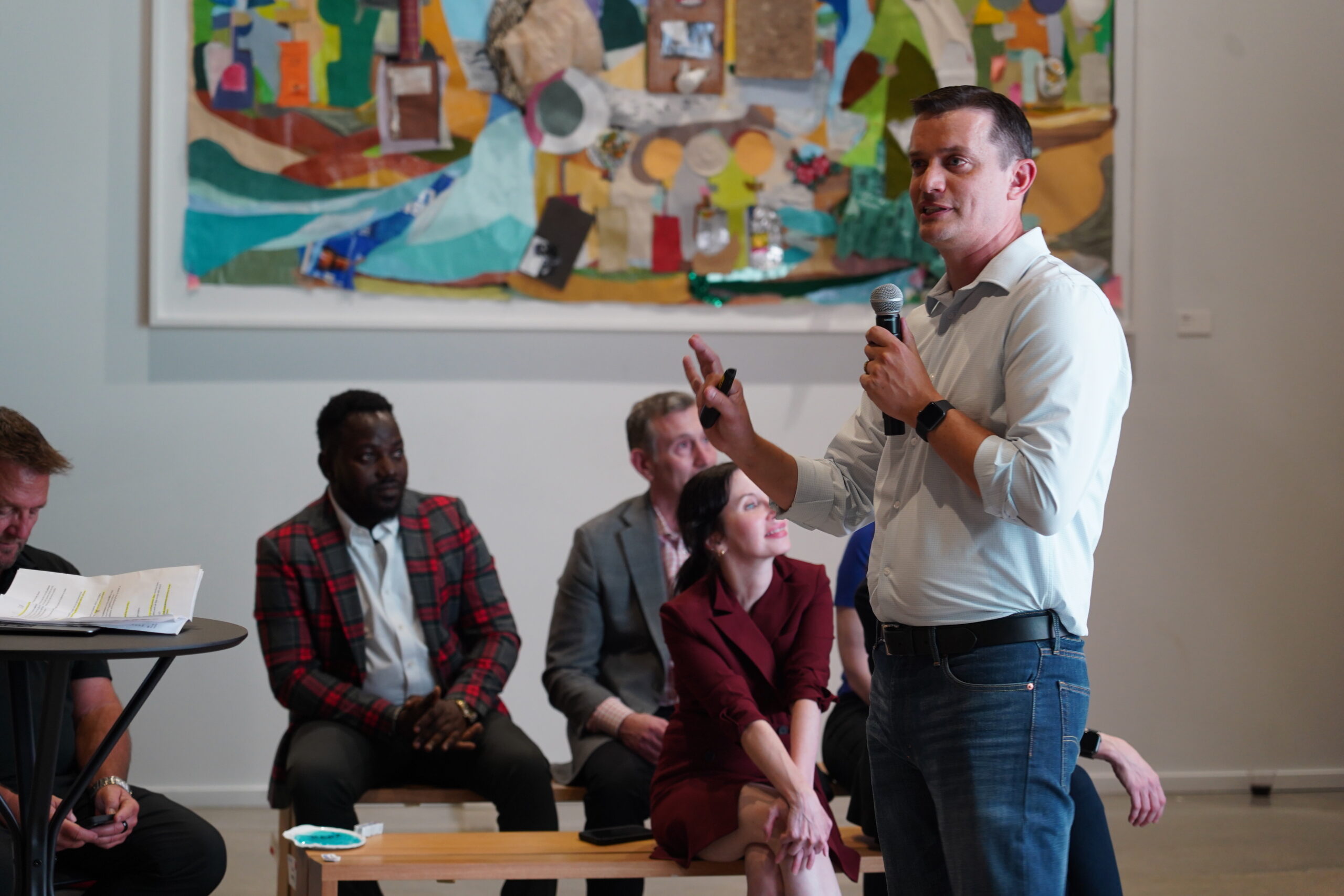The following is a guest post from Christoper Wink, publisher and CEO at Technical.ly. The views and opinions expressed are those of the author and do not necessarily reflect the official policy or position of Silicon Prairie News, its staff or its affiliates. We welcome diverse perspectives and encourage open dialogue on the topics that shape our startup and innovation community.
At 58 miles apart, should Omaha-Lincoln brand itself as one startup hub?
Whether or not Nebraska economic development branding matters much to you, this teaches about how places can (or can’t) show up together. I looked at eight other city-pair tech regions to put Nebraska’s debate in context.
“Omaha and Lincoln are the same startup ecosystem,” entrepreneur-consultant Tom Chapman, who is cofounder of eye-care startup Peeq HQ, wrote in a recent LinkedIn essay that’s ricocheting through Nebraska’s tech circles. He noted that M25’s new Best of the Midwest list ranks Lincoln No. 15 and Omaha No. 16 — side by side, yet still separate.
The question prompted me to ask for feedback from others. Literal distance matters, but other culture factors play a role too, like airports, sports teams and commutes.
There may also be more than one answer: A single cohesive ecosystem strategy can be a different concept than how a given place is marketed and talked about.
What the distances say
To see how unusual (or not) a joint Omaha–Lincoln identity would be, I mapped the road distance between eight well-known paired innovation hubs.

Three quick takeaways
1) Different parts of the country present differently
The big states of the Great Plains simply have less density than the denser mid-Atlantic and the faster-growing Southeast. Silicon Valley’s Bay Area (SF–SJ) and Colorado’s Front Range (Denver–Boulder) confront traffic and cultural differences, but they’ve each developed a shared identity. Omaha–Lincoln sit within a similar distance as those two examples, and have even more cultural cohesion.
2) Proximity alone doesn’t guarantee a shared brand
DC and Baltimore are closer than San Francisco and San Jose, yet rarely market themselves together — a point Chapman’s supporters highlight.
3) Beyond ~50 miles, cohesion drops off
Every paired region I found that actually co-brands (or is widely perceived as a single ecosystem) sits inside that threshold. At 90 miles, New York–Philadelphia illustrates the psychological distance that creeps in, even with fast rail links. Louisiana does have a strong statewide identity, but Baton Rouge and New Orleans are still distinct. Meanwhile, especially close cities like Minneapolis–St. Paul inevitably co-exist.
Why it matters for Nebraska
Chapman argues a united “Builder Plains” (or some name yet to emerge) would help the state “punch above its weight,” combining resources such as Invest Nebraska, University of Nebraska Medical Center spin-outs and software heavyweights Hudl and Buildertrend.
Longtime startup champions like Chapman remember the roots of the beloved news resource Silicon Prairie News, a Technical.ly affiliate now focused on Nebraska: it once served a far-wider reach of the Midwest and Great Plains. As more activity blossomed in more places, it made sense for Silicon Prairie News to narrow its focus.
Chapman argues that at a regional level, the Omaha–Lincoln paring should present more like Denver–Boulder. Critics worry about diluting each city’s identity, but the data suggest the mileage barrier isn’t the problem.
Branding only sticks if local founders and funders use it. Expect the conversation to surface at upcoming ecosystem events and in the next M25 rankings.
In the meantime, tell me: Should Omaha and Lincoln fly one startup flag, or keep their own colors?




Leave a Reply